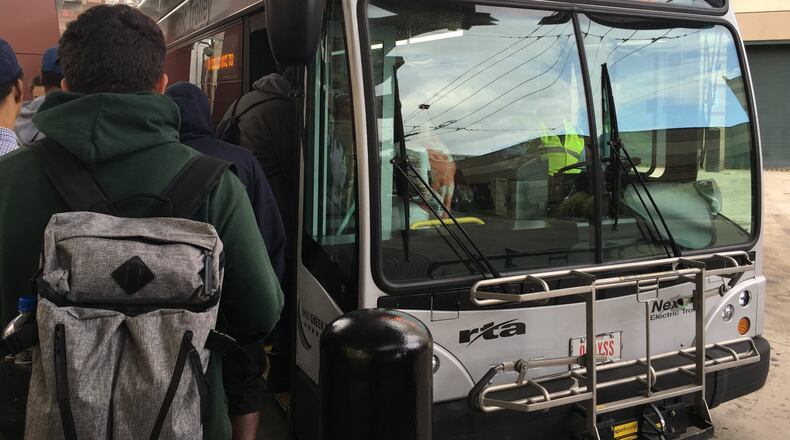The proposed system redesign calls for making all routes 30 minutes or less during peak times, and some routes would have buses arrive within 15 minutes.
“The 9-5 Monday to Friday workweek is a relic, younger folks are not as interested in owning personal cars and everyone is looking for quicker solutions to their daily life needs,” said Bob Ruzinsky, Greater Dayton RTA’s deputy CEO. “Providing more direct public transit, with less wait times, will be a game-changer in improving the lives of our region’s residents and (to) make our communities more attractive places for businesses to locate.”
The Greater Dayton RTA began work on a transit system redesign study in 2018.
The high-level plan was completed last summer and involved input from more than 2,000 customers and many regional jurisdictions and community and neighborhood groups, officials said.
The full plan is expected to be released this spring. Some parts already have been shared with the agency’s Board of Trustees.
The study proposes route changes to provide many customers with more direct service to their final destinations, said Brandon Policicchio, RTA’s chief customer and business development officer.
“In today’s world we all hate to wait,” he said. “Making public transit quick, reliable and convenient will improve everyone’s quality of life.”
The study also calls for more frequent service on more routes, reducing wait times and helping customers get to their destinations more quickly, even when they have a connection, he said.
The proposed system redesign would require additional buses and drivers and some new routes and route modifications, Policicchio said, and the goal is to develop a “next-generation” transit system with higher-quality services.
Policicchio said once long-term funding is secured, the plan likely would be implemented over about five years.
The proposed redesign will require an increase in local funding support, which hopefully can help obtain federal and state grants, he said.
The RTA is interested in providing bus service more like the Flyer, the free circulator that travels along a short route between downtown and the University of Dayton campus.
The Flyer bus arrives at stops about every 10 minutes.
The only RTA buses that arrive anywhere nearly as frequently run along routes 7 and 8, which have under 20-minute wait times during peak weekday periods.
“Imagine this Flyer-like service in every Dayton neighborhood,” said Mark Donaghy, Greater Dayton RTA’s CEO, who is retiring in less than two months. “That’s the future we at RTA would like to see.”
Route 7 and 8 combined serve west and northwest Dayton and parts of north Kettering, officials said. They are among the top ridership routes, and RTA runs more frequent service to ensure they are not overcrowded.
The Greater Dayton RTA already is working to expand some of its services.
Last week, the agency approved expanding and adding new zones to its Connect On-Demand program.
The program, which launched several years ago, provides transportation services to “underserved and unserved areas” in various parts of Montgomery and Greene counties with very limited or no fixed-route bus service, officials say.
The service is available 24/7 and is free for customers traveling within the designated service areas, which include areas in Austin Landing, Brookville, Clayton, Drexel, Englewood, Farmersville, Germantown, Miamisburg, New Lebanon, Trotwood and Wright-Patterson Air Force Base.
Customers can plan their trip through the RTA call center and use RTA, Anton’s Taxi, Uber and Lyft. The new and expanded zones are in northwest Montgomery County.
“The On-Demand program also has successfully complemented RTA’s existing service, with over 70% of customer trips connecting to and from bus routes, creating an effective first- and last-mile connection,” said Sharon Howard, a member of the RTA Board of Trustees.
After investing more than $100 million in new vehicles, RTA has the newest fleet of buses in Ohio and one of the newest fleets in the nation, said Ruzinsky, who will become the agency’s new CEO April 1.
The agency also plans to invest heavily in its electric infrastructure system over about 10 years, he said.
About the Author




